Examining the Role of the Human Hippocampus in Approach-Avoidance Decision Making Using a Novel Conflict Paradigm and Multivariate Functional Magnetic Resonance Imaging
- PMID: 26558775
- PMCID: PMC6605357
- DOI: 10.1523/JNEUROSCI.1915-15.2015
Examining the Role of the Human Hippocampus in Approach-Avoidance Decision Making Using a Novel Conflict Paradigm and Multivariate Functional Magnetic Resonance Imaging
Abstract
Rodent models of anxiety have implicated the ventral hippocampus in approach-avoidance conflict processing. Few studies have, however, examined whether the human hippocampus plays a similar role. We developed a novel decision-making paradigm to examine neural activity when participants made approach/avoidance decisions under conditions of high or absent approach-avoidance conflict. Critically, our task required participants to learn the associated reward/punishment values of previously neutral stimuli and controlled for mnemonic and spatial processing demands, both important issues given approach-avoidance behavior in humans is less tied to predation and foraging compared to rodents. Participants played a points-based game where they first attempted to maximize their score by determining which of a series of previously neutral image pairs should be approached or avoided. During functional magnetic resonance imaging, participants were then presented with novel pairings of these images. These pairings consisted of images of congruent or opposing learned valences, the latter creating conditions of high approach-avoidance conflict. A data-driven partial least squares multivariate analysis revealed two reliable patterns of activity, each revealing differential activity in the anterior hippocampus, the homolog of the rodent ventral hippocampus. The first was associated with greater hippocampal involvement during trials with high as opposed to no approach-avoidance conflict, regardless of approach or avoidance behavior. The second pattern encompassed greater hippocampal activity in a more anterior aspect during approach compared to avoid responses, for conflict and no-conflict conditions. Multivoxel pattern classification analyses yielded converging findings, underlining a role of the anterior hippocampus in approach-avoidance conflict decision making.
Significance statement: Approach-avoidance conflict has been linked to anxiety and occurs when a stimulus or situation is associated with reward and punishment. Although rodent work has implicated the hippocampus in approach-avoidance conflict processing, there is limited data on whether this role applies to learned, as opposed to innate, incentive values, and whether the human hippocampus plays a similar role. Using functional neuroimaging with a novel decision-making task that controlled for perceptual and mnemonic processing, we found that the human hippocampus was significantly active when approach-avoidance conflict was present for stimuli with learned incentive values. These findings demonstrate a role for the human hippocampus in approach-avoidance decision making that cannot be explained easily by hippocampal-dependent long-term memory or spatial cognition.
Keywords: approach–avoidance conflict; decision making; functional magnetic resonance imaging; hippocampus; memory.
Copyright © 2015 the authors 0270-6474/15/3515040-11$15.00/0.
Figures
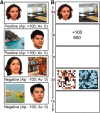
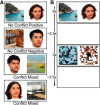

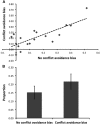
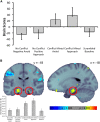
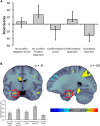
Similar articles
-
Hippocampal damage disrupts the latent decision-making processes underlying approach-avoidance conflict processing in humans.PLoS Biol. 2025 Feb 11;23(2):e3003033. doi: 10.1371/journal.pbio.3003033. eCollection 2025 Feb. PLoS Biol. 2025. PMID: 39932954 Free PMC article.
-
Perirhinal Cortex is Involved in the Resolution of Learned Approach-Avoidance Conflict Associated with Discrete Objects.Cereb Cortex. 2021 Mar 31;31(5):2701-2719. doi: 10.1093/cercor/bhaa384. Cereb Cortex. 2021. PMID: 33429427 Free PMC article.
-
The role of the hippocampus in approach-avoidance conflict decision-making: Evidence from rodent and human studies.Behav Brain Res. 2016 Oct 15;313:345-357. doi: 10.1016/j.bbr.2016.07.039. Epub 2016 Jul 25. Behav Brain Res. 2016. PMID: 27457133 Review.
-
Ventral Hippocampal CA1 and CA3 Differentially Mediate Learned Approach-Avoidance Conflict Processing.Curr Biol. 2018 Apr 23;28(8):1318-1324.e4. doi: 10.1016/j.cub.2018.03.012. Epub 2018 Apr 5. Curr Biol. 2018. PMID: 29606418
-
Animal to human translational paradigms relevant for approach avoidance conflict decision making.Behav Res Ther. 2017 Sep;96:14-29. doi: 10.1016/j.brat.2017.04.010. Epub 2017 Apr 24. Behav Res Ther. 2017. PMID: 28495358 Free PMC article. Review.
Cited by
-
A Corticothalamic Circuit Trades off Speed for Safety during Decision-Making under Motivational Conflict.J Neurosci. 2022 Apr 20;42(16):3473-3483. doi: 10.1523/JNEUROSCI.0088-22.2022. Epub 2022 Mar 10. J Neurosci. 2022. PMID: 35273082 Free PMC article.
-
Integrative Brain Dynamics in Childhood Bullying Victimization: Cognitive and Emotional Convergence Associated With Stress Psychopathology.Front Integr Neurosci. 2022 Apr 27;16:782154. doi: 10.3389/fnint.2022.782154. eCollection 2022. Front Integr Neurosci. 2022. PMID: 35573445 Free PMC article. Review.
-
Dopaminergic Mechanisms Underlying Normal Variation in Trait Anxiety.J Neurosci. 2019 Apr 3;39(14):2735-2744. doi: 10.1523/JNEUROSCI.2382-18.2019. Epub 2019 Feb 8. J Neurosci. 2019. PMID: 30737306 Free PMC article.
-
Cross-species anxiety tests in psychiatry: pitfalls and promises.Mol Psychiatry. 2022 Jan;27(1):154-163. doi: 10.1038/s41380-021-01299-4. Epub 2021 Sep 24. Mol Psychiatry. 2022. PMID: 34561614 Free PMC article. Review.
-
Brain activity during pursuit and goal-conflict threat avoidance in major depressive disorder.Personal Neurosci. 2022 Aug 23;5:e9. doi: 10.1017/pen.2022.1. eCollection 2022. Personal Neurosci. 2022. PMID: 36105154 Free PMC article.
References
Publication types
MeSH terms
LinkOut - more resources
Full Text Sources
Medical
